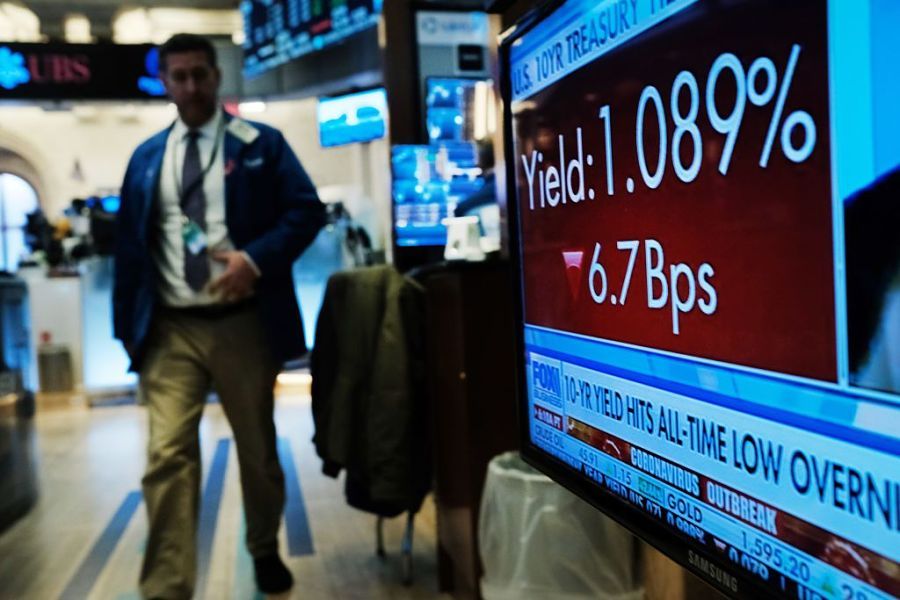Investors racing to buy debt tied to environmental, social and governance goals are expected to propel issuance to fresh highs next year, boosted by leveraged finance.
Sales of green, social, sustainability and sustainability-linked bonds by corporations and governments worldwide surpassed $1 trillion for the first time this year. Underwriters of the bonds and loans, who’ve been on a hiring spree to keep up with demand, are braced for another surge.
A 50% increase in sustainable bond issuance is possible in 2022, and high yield has “a lot of room to run,” said Amanda Kavanaugh, head of sustainable financing for the Americas at Mitsubishi UFJ Financial Group Inc.
The Japanese lender also expects a rise in sustainability-linked leveraged loans next year. “There is going to be a significant uptick,” Kavanaugh said.
Citigroup Inc. has a “pretty healthy” pipeline of sustainability-linked bonds for the first quarter, said Philip Brown, managing director of global sustainable debt capital markets. Brown projects about $1.3 trillion in global sales of green, social, sustainability and sustainability-linked bonds alone next year, including more junk and emerging market issuance.
“Many corporations across sectors are making commitments to sustainability and that is going to precipitate further issuance,” said Brown in a telephone interview Dec. 10. “We see larger order books, a greater degree of oversubscription and therefore a greater price tension.”
Brown expects a two-to-three basis points pricing advantage — a so-called greenium — for issuers on average across most sectors in 2022, allowing them to cut borrowing costs. Citi is the third largest underwriter of green bonds, according to Bloomberg data.
BNP Paribas, the second biggest underwriter, foresees a busy January, boosted by Latin American issuers that had been waiting for a window to sell labeled bonds abroad, Anne van Riel, head of sustainable finance capital markets for the Americas at BNP, said in a telephone interview on Dec. 3.
Inflection Point
BNP expects sales of green bonds alone to hit a record $880 billion by the end of 2022. That’s up from $505 billion issued this year, according to data compiled by Bloomberg.
Morgan Stanley estimates $750 billion to $950 billion of green bonds, driven by the European Union. That would include 238 billion euro equivalent from the EU’s NextGeneration Green Bond program.
France meanwhile plans net bond issuance of 260 billion euros that will include two new 10-year benchmarks. It’s also considering a rare inflation-indexed green bond.
“We think we will get pretty close to $1 trillion mark just on green alone next year. This is going to be the inflection point year,” Trevor Allen, sustainable research analyst at BNP, said in a telephone interview Dec. 3.
Barclays projects around 40% of Euro-denominated investment-grade issuance to come with an ESG label, 14% of dollar high-grade debt and 33% of the sterling market.
Significant growth in sustainability-linked bonds, which hike borrowing costs if borrowers don’t meet specified targets, is also expected.
Barclays expect SLB volume to overtake use-of-proceeds bonds in 2023. “Theoretically all bonds issued could come in a sustainability-linked structure,” strategists led by Charlotte Edwards wrote in a note earlier this month.
Greenwashing Hazard
Even if there’s another issuance surge, it probably won’t be enough to satisfy demand. Global sustainable fund assets almost doubled from March to September, to $3.9 trillion, boosted by new disclosure rules in Europe, according to Morningstar. Sustainable fixed-income funds pulled in $35 billion during the third quarter, up from about $20 billion in the corresponding period of 2020.
Excess cash will keep costs in borrowers’ favor. It could also give companies an incentive to misrepresent or inflate sustainability claims, according to James Rich, a senior portfolio manager at Aegon Asset Management.
“Investors are definitely getting better at scrutinizing labeled bonds, which is helpful,” Rich aIS in an interview. “But until that greenium closes, there is a financial incentive to greenwash.”
Meanwhile, pressure is increasing on managers of ESG-labeled investment funds to show they’re being truthful with customers about what they’re selling. Europe enforced its Sustainable Finance Disclosure Regulation in March — an ambitious framework designed to fight greenwashing — and is working on substantial updates.
In the U.S., the Securities and Exchange Commission is planning rules that require corporations to publicly disclose risks from climate change.
“Investors will always need to have their guard up a bit, as what constitutes being a ‘green’ project is subjective and even varies by geography,” said Lisa Abraham, senior ESG fixed income research analyst at Brown Advisory.
There are also doubts as to whether sustainable finance has any real impact on the environment or society, said Bradford Cornell, emeritus professor of finance at UCLA Anderson School of Management.
“Wall Street can make more fees by doing that,” Cornell said, referring to underwriting ESG-linked debt.
“I don’t think it has much social benefit, but if they can sell more that way, they’re going to do it,” he said in a Dec. 10 phone interview.








